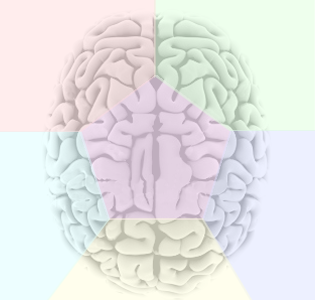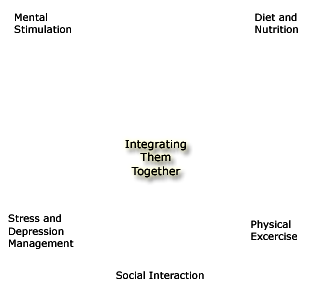Blood Sugar Control Tips
Last month I talked about the brain dangers inherent to sweeteners and insulin resistance and promised I would send you a list of things that have been shown to help protect the body and brain from high or spiking blood sugar. If you need a review of the importance of this topic click here. Suffice it to say that various research in the past 5 years, in the US, Japan, Australia, and England has demonstrated the real dangers involved in excess sugar intake, including a dramatically increased risk for developing Alzheimer’s. If this is of concern to you here are some items to consider.
Cinnamon – Cinnamon has been used for several thousand years in traditional Ayurvedic and Greco-European medical systems. Native to tropical southern India and Sri Lanka, the bark of this evergreen tree is used to manage conditions such as nausea, bloating, flatulence, and anorexia
Astudy at the US Department of Agriculture’s Beltsville Human Nutrition Research Center isolated insulin-enhancing complexes in cinnamon that are involved in preventing or alleviating glucose intolerance and diabetes (Anderson 2004). The problem with long-term cinnamon use is the presence of highly reactive aldehyde compounds. These toxic fat-soluble compounds accumulate in the body over time. An aqueous extract of cinnamon has been identified and through a patented process, delivers cinnamon’s beneficial water-soluble nutrients while removing deleterious fat-soluble toxins.
In a recent double-blind, placebo-controlled trial (Stoecker 2010), a group of individuals (average age 61) with high blood sugar taking 500 mg daily of this form of cinnamon extract experienced an average decline of 12 mg/dL in fasting blood glucose after just two months. These findings support previous clinical data on similar aqueous cinnamon extracts, in which diabetic patients saw their fasting glucose drop an average of 10.3% after four months (Mang 2006).
Carnosine – Carnosine is a glycation inhibitor that has been shown to exhibit protective effects against diabetic nephropathy and reduce the formation of AGEs (Janssen 2005; Yan 2005).
Studies show that diabetics’ cells have lower-than-normal carnosine levels, similar to levels in older adults (McFarland 1994). Carnosine lowers elevated blood sugar levels, limits oxidant stress and elevated inflammation, and prevents protein cross-linking in diabetics and otherwise healthy aging adults (Jakus 2003; Hipkiss 2005; Nagai 2003; Hipkiss 2001; Aldini 2005). Additionally,
Carnosine supplementation also prevents the microscopic blood vessel damage that produces diabetic retinopathy, a major cause of blindness in diabetics (Pfister 2011) Carnosine supplements also prevent loss of sensory nerve function (neuropathy) in diabetic animals (Kamei 2008).
Biotin – Biotin enhances insulin sensitivity and increases the activity of glucokinase, the enzyme responsible for the first step in the utilization of glucose by the liver. Glucokinase concentrations in diabetics are very low. Animal studies have shown that a high biotin diet can improve glucose tolerance and enhance insulin secretion (Zhang 1996; Furukawa 1999).
Carnitine – An extensive body of literature supports the use of carnitine in diabetes (Mingrone 2004). Carnitine lowers blood glucose and HbA1c levels, increases insulin sensitivity and glucose storage, and optimizes fat and carbohydrate metabolism. Carnitine deficiency is common in type 2 diabetes. In a large human trial, acetyl-L-carnitine helped prevent or slow cardiac autonomic neuropathy in people with diabetes (Turpeinen 2005).
Chromium – Chromium is an essential trace mineral that plays a significant role in sugar metabolism. Chromium supplementation helps control blood sugar levels in type 2 diabetes and improves metabolism of carbohydrates, proteins, and lipids. Several studies have shown encouraging results from chromium supplementation:
- A controlled human study of type 2 diabetics compared two forms of chromium (brewer’s yeast and chromium chloride) (Bahijiri 2000). Both forms of chromium significantly improved blood sugar control. Positive results were also seen in two smaller human trials (Ghosh 2002; Jovanovic 1999).
- Amla (Indian gooseberry) and shilajit have more recently been shown to synergistically enhance chromium’s beneficial action. In a randomized clinical trial of 150 individuals with type 2 diabetes, 200 mcg twice per day of this novel chromium compound in addition to standard medication induced a greater reduction in fasting blood glucose than placebo (14.6% on average) and lowered after meal blood glucose (14.2%) after just two months (Bhattacharyya 2010).
Lipoic acid – As a powerful antioxidant, lipoic acid positively affects important aspects of diabetes, including blood sugar control and the development of long-term complications such as disease of the heart, kidneys, and small blood vessels (Jacob 1995, 1999; Kawabata 1994; Melhem 2002; Nagamatsu 1995; Song 2005; Suzuki 1992).
Coenzyme Q10 – Coenzyme Q10 (CoQ10) improves blood sugar control, lowers blood pressure, and prevents oxidative damage caused by disease. 2000).
Vitamin C. Several preclinical studies evaluated vitamin C’s role during mild oxidative stress. The aqueous humor of the eye provides surrounding tissues with a source of vitamin C. Since animal studies have shown that glucose inhibits vitamin C uptake, this protective mechanism may be impaired in diabetes (Corti 2004). Supplementation with antioxidant vitamins C and E plays an important role in improving eye health (Peponis 2004). High vitamin C intake depresses glycation, which has important implications for slowing diabetes progression and aging (Krone 2004).
Vitamin E. Vitamin E has been shown to significantly reduce the risk of developing type 2 diabetes (Montonen 2004). One double-blind trial found a reduction in the risk of cardiac autonomic neuropathy, or damage to the nerves that supply the heart, which is a complication of diabetes (Manzella 2001). Additional evidence documented benefits for diabetic peripheral neuropathy (Tutuncu 1998), blood sugar control (Kahler 1993; Paolisso 1993a,b; Paolisso 1994), and cataract prevention (Paolisso 1993a,b; Paolisso 1994; Seddon 1994). In addition, vitamin E enhances sensitivity to insulin in type 2 diabetics (Paolisso 1993a,b).
DHEA (Dehydroepiandrosterone) Recent studies have yielded very encouraging results supporting dehydroepiandrosterone (DHEA) supplementation in diabetics. DHEA has been shown to improve insulin sensitivity and obesity in human and animal models (Yamashita 2005).
Essential fatty acids – In human experiments, omega-3 fatty acids lowered blood pressure and triglyceride levels, thereby relieving many of the complications associated with diabetes. In animals, omega-3 fatty acids cause less weight gain than other fats do; they have also been shown to have a neutral effect on LDL, while raising HDL and lowering triglycerides (Petersen 2002). There are two types of essential fatty acids:
- Omega-3. Marine oil contains omega-3 fatty acids. The research on omega-3 fatty acids stems from studies of the Inuit (Eskimo) people, who seldom suffer from heart attacks even though their diets contain an enormous amount of fat from fish, seals, and whales, presumably because these are very high in omega-3 fatty acids. Omega-3 fatty acids found in marine oil lower blood triglyceride levels, contribute to “thinning” blood, and decrease inflammation (Ebbesson 2005). These effects partially explain many of fish oil’s benefits.
- Omega-6. Diabetic neuropathy is a gradual degeneration of peripheral nerve tissue. There is some evidence that GLA, an omega-6 fatty acid, can be helpful if given long enough to work. In one double-blind, placebo-controlled study, There is also evidence that GLA is more effective for diabetic neuropathy when combined with lipoic acid (Hounsom 1998).
Fiber – Eating a diet rich in high-fiber foods prevents and reduces the harm caused by chronically elevated blood glucose.
Magnesium – Diabetics are often deficient in magnesium, which is depleted by medications and the disease process (Eibl 1995; Elamin 1990; Tosiello 1996). One double-blind study suggested that magnesium supplementation enhanced blood sugar control (Rodriguez-Moran 2003).
NAC (N-acetylcysteine) – NAC is a powerful antioxidant that is used to treat acetaminophen overdose. Among diabetic rats, it has also demonstrated the ability to protect the heart against endothelial damage and oxidative stress that is associated with heart attacks among diabetics. In one study, NAC was able to increase the availability of nitric oxide in diabetic rats, thus improving their blood pressure as well as reducing the level of oxidative stress in their hearts (Xia 2006). In a human study examining the effects of broad-based antioxidants, NAC, in addition to vitamins C and E, was able to reduce oxidative stress after a moderate-fat meal (Neri 2005).
Botanicals
Irvingia gabonensis – Published studies show that extract of the African mango Irvingia gabonensisinhibits alpha-amylase-mediated conversion of carbohydrates into sugar (Oben 2008).
White kidney bean – Extracts from the common white kidney bean, Phaseolus vulgaris, are powerful blockers of the enzyme alpha-amylase (Mosca 2008; Obiro 2008). White bean extract shows enormous potential for preventing the blood sugar and insulin spikes associated with many chronic health disorders (Preuss 2007).
Green coffee extract – Coffee contains some well-studied phytochemicals such as chlorogenic acid, caffeic acid, ferulic acid, and quinic acid (Charles-Bernard 2005). Some of coffee’s most impressive effects can be seen in blood glucose management. Chlorogenic acid and caffeic acid are the two primary nutrients in coffee that benefit individuals with high blood sugar. Glucose-6-phosphatase is an enzyme crucial to the regulation of blood sugar. Since glucose generation from glycogen stored in the liver is often overactive in people with high blood sugar (Basu 2005), reducing the activity of the glucose-6-phosphatase enzyme leads to reduced blood sugar levels, with consequent clinical improvements.
Blueberries – Native to North America, blueberries have long been used in food preparation and for therapeutic purposes (Prett 2005). Many of the health benefits attributed to blueberries have been linked to their potent antioxidant properties. Scientists attribute these powerful antioxidant properties to polyphenols in blueberries known as anthocyanins
In published studies, blueberries block carbohydrate metabolism in the intestine by up to 90% compared with the prescription drug acarbose (Johnson 2011; Melzig 2007).
Additionally, blueberries have been shown to lower baseline blood sugar levels in those diagnosed with type 2 diabetes by 37% (Vuong 2009; Abidov 2006; Takikawa 2010).
In a double-blind, placebo-controlled study, 32 obese, insulin-resistant (pre-diabetic) adult men and women drank smoothies made with freeze-dried blueberry powder for six weeks. A placebo control group consumed smoothies without blueberry extracts (Stull 2010). With no changes in body weight or composition compared to controls, the blueberry group showed a statistically significant and much greater improvement in insulin sensitivity (22.2% plus or minus 5.8%) versus the placebo arm (4.9% plus or minus 4.5%).
Ginkgo Biloba – Ginkgo has also been observed to lower blood glucose levels. It was studied in type 2 diabetics at a dose of 120 mg for three months. Ginkgo supplementation produced an increase in liver metabolism of insulin and oral hypoglycemic medications, which corresponded to a reduction in plasma glucose levels (Kudolo 2001). Type 2 diabetics with pancreatic exhaustion received the most benefit. Ginkgo does not appear to increase beta cell production; rather it enhances liver uptake of existing insulin, thereby reducing high insulin levels.
And as if that were not enough to choose from consider also the importance of:
Exercise – Actually exercise should not be an alternative but rather an compounding synergizer. You will recall (if you attended my class) that Dr. Suzanne Craft, formerly of the University of Washington, noted that they found just 30 minutes of exercise once a day would generally control insulin resistance for 24 hours. But she also noted that a combination of the right foods/nutrients and exercise were optimally effective.
Currently I believe the best supplement available to address the damaging effect of sugar on the brain is the Mitocondrial Energy Optimizer with PQQ, from Life Extension. Although it is a bit pricey. But I and several of my clients have found it to be quite helpful – both for enhancing memory and energy.
Ginkgo is available with acetyl-L-carnitine, NAC, Vitamins C & E and 4 other memory enhancing supplements in the drink mix Memoryze. I am currently checking on a good inexpensive source for An aqueous extract of cinnamon. If you cannot find any of those locally or you would like to purchase one or more of these at a discount just send me an email at DavidRJL@aol.com with your request, and I’ll let you know what I’ve found.
Prevention Strategies 








- FREE SPECIAL REPORT AND UPDATES
For free monthly updates on the latest practical research related to brain health and memory improvement, and a free 23 page report on How to Prevent or Arrest Alzheimer's, Click here. Recent Comments
Archives
- July 2019
- November 2018
- September 2018
- July 2018
- June 2018
- April 2018
- February 2018
- January 2018
- December 2017
- October 2017
- September 2017
- August 2017
- June 2017
- May 2017
- March 2017
- January 2017
- December 2016
- October 2016
- September 2016
- August 2016
- June 2016
- May 2016
- April 2016
- March 2016
- February 2016
- January 2016
- December 2015
- November 2015
- August 2015
- July 2015
- June 2015
- May 2015
- April 2015
- March 2015
- February 2015
- January 2015
- November 2014
- October 2014
- September 2014
- August 2014
- July 2014
- June 2014
- April 2014
- March 2014
- February 2014
- January 2014
- December 2013
- November 2013
- October 2013
- September 2013
- August 2013
- July 2013
- June 2013
- June 2012
- February 2012
- January 2012





